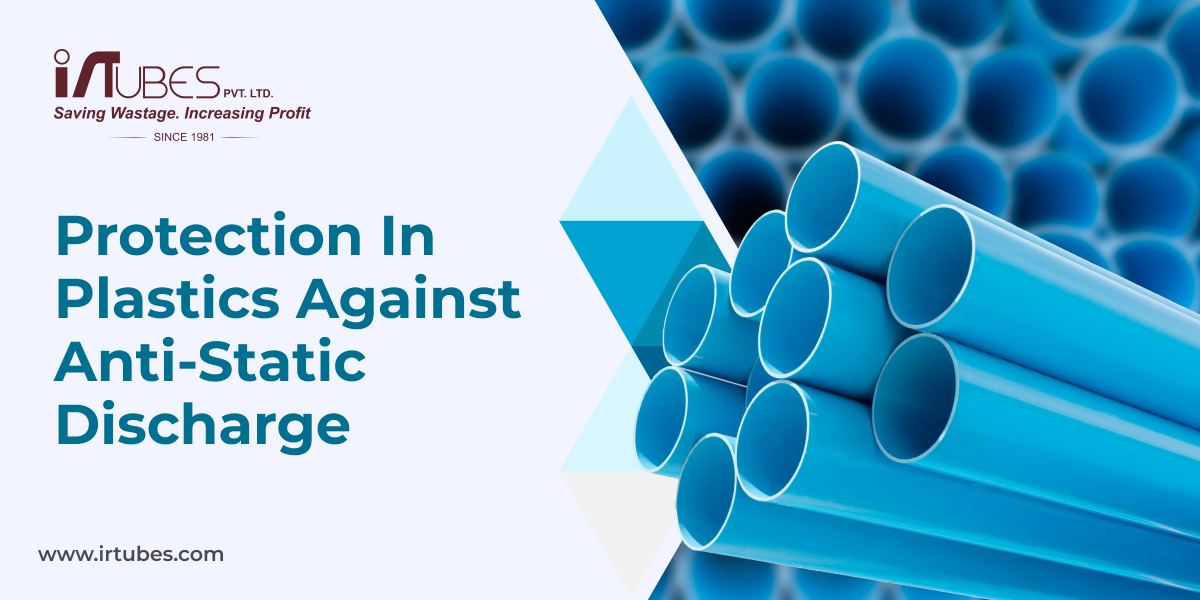
Static electricity has its uses, no doubt. Think laser printers, photocopiers and flash bulbs for photography. Why do we call this static electricity? Static electricity is a kind of electric charge that stays in one place, as in it is really is static. On the other hand, current electricity or electric current, is electricity that moves from one place to another along a definite path called a circuit.
Static electricity is harmless. But when large amounts of it build up and suddenly discharge you can get dramatic and dangerous sparks. Charge gets accumulated on surface and handling actions such as winding or when being rubbed with other surfaces, significantly increases the charge.
And a small spark can start a fire that in an industrial set up can lead to an explosion. Also, when walking on a rug for e.g. and then you start handling delicate electronic components, the sudden discharge of current from your body can be enough to cause some very expensive damage.
Static electricity is a major hazard in industrial processes and applications. Because polymeric materials are not conductive, they accumulate static electricity that results from friction contact between materials. This can cause films to stick to each other, to tools, machines, or other surfaces, pick up dust, and even sudden discharge of energy in the form of sparks, which can lead to fires. Further, most Non Polar Polymers have a tendency to build static charge.
Static generally builds up when insulators (materials that don’t conduct electricity very well, like plastics, rubber, and so on) or insulated conductors are rubbed, To get rid of static electricity, we have to turn it into current electricity by creating a circuit
How anti-static products work
To stop static, you must ensure electricity never has a chance to build up. In other words, you must make sure there’s an electric circuit of some kind to carry any electric charge harmlessly away. Anti-static products do this in all kinds of different ways, sometimes physical and sometimes chemical.
Static Effect in Plastics Applications
Pipelines and hoses are another place where static electricity can cause problems. Static is a particular concern in pipes that carry flammable chemicals, but it can also be a nuisance in ventilation or cleaning pipes where a build-up of static can cause a gradual accumulation of dust and blockage. Most pipes are now made of plastics, which only adds to the problem. The problems can be several especially if it discharges spontaneously:
- Static charge increases the attraction of dust
- Thin plastic films or other light weight plastic parts or particles can stick to each other or to other materials.
- A discharge can be painful to consumers, for e.g. flooring applications
- Industries working with flammable substances or fine powders may face safety hazards from electstatic discharges
- Many semiconductor devices used in electronics are highly sensitive to the presence of static charge and can be damaged by a discharge.
Physical & Chemical methods to solve static issues
One can either circumvent charge by using conductive materials. This can be done through earthing. For e.g., use of Metal wires in petrol /Hydrocarbon Handling Hoses etc
Secondly, one can resolve the issue of static by putting additives in plastics. However, if a plastic is used as a food packaging material, for example, all additives must be nontoxic and safe. Additives like carbon black may radically change the colour of a plastic, affect its strength, or alter its physical properties in other unhelpful ways. So there sometimes must be a degree of compromise between making a plastic anti-static and ensuring that it still performs well in other ways.
With the addition of special ingredients in compounding or in Polymer modification the ingredients migrate to the surface to change the surface properties and thus provide in situ protection.
We at I. R. Tubes Private Ltd suggest using LOXIOL antistatic agents which are designed to be incorporated into the plastics material in the dry blend or compound. After the thermoplastic conversion like extrusion, injection moulding or calendaring, the additive migrates to the plastics surface to avoid build-up of static charge. Residual antistatic agent in the polymer bulk serves as a reservoir in case the material at the surface is removed in any way.
The antistatic performance depends on the environmental conditions, mainly the humidity. The higher the humidity, the better is the antistatic performance. That is why the measurement of the antistatic effect requires defined conditions, preferably in a standard climate chamber.
We list below the various TEST METHODS and IN the different APPLICATIONS
TEST METHODS
- Volume resistance – acc. To DIN IEC 93/VDE 0303-30 IN (Ohm x cm)
- Surface resistance – acc. To DIN IED 93/VDE 0303-30 IN (Ohm)
- Surface conductivity, maximum charge and charge decay with Static Honestometer
| Classification of antistatic values | ||
| Surface resistance | Half Life time | Antistatic Effect |
| DIN IEC 93 (Ohm) | Honestometer (s) | |
| <109 | 0 | EXCELLENT |
| 109 – 100 | 1 | VERY WELL |
| 1010– 1011 | 2 to 10 | WELL |
| 1011 – 1012 | 10 to 60 | MODERATE |
| >1012 | > 60 | INSUFFICIENT |
| Antistatic Properties | |||||
| Surface Conductivity | Specific Surface Resistance/Specific Volume Resistance | ||||
| Test Device: Honestometer | Test Device: Dr. Tiedig DIPATO 3 | ||||
| Coltage : 10KV | Method: DIN IEC 93 | ||||
| Electrode distanced: 20mm | Electrode: C (safety ring electrode) | ||||
| Voltage: 50 to 1000V | |||||
| TimeK 60 to 180s | |||||
| Static Honestometer | Volume/Surface Resistivity to Surface Conductivity DIN IEC 93 | ||||
| Charging with corona discharge measurement of potential with rotating plate | 1,3,4 Electrode/ 2 Sample /5 Voltage | ||||
INTERNAL ANTISTATIC AGENTS FOR RUBBER PROCESSING
| Product Designation | Product Chemistry | Delivery Form | Melting Range | Dosage (%) | Function |
| Loxiol 124 RG | Polyol-partial-ester/Plasticizer mixture | Liquid | Nil | 2.0 to 10.0 | Antistatic Agent |
| Loxiol 3380 | Polyol partial-ester | Liquid | Nil | 2.0 to 10.0 | Antistatic Agent |
| Formulation -No. | 1 | 3 | 6 |
| NBR Rubber Compound | 100 | 100 | 100 |
| Filler, Precipitated Silica Silan | 30 | 30 | 30 |
| Filler, Mg-silicate ultra fine | 60 | 60 | 60 |
| Antioxidant | 2 | 2 | 2 |
| UV Abosrber | 2 | 2 | 2 |
| TiO2 | 5 | 5 | 5 |
| Zn-oxide | 5 | 5 | 5 |
| Sulphur | 0.5 | 0.5 | 0.5 |
| Vulcanisation Additives | 2 | 2 | 2 |
| Loxiol G20 | 1 | 1 | 1 |
| DOP | 10 | 0 | 0 |
| Loxiol 3380 | 0 | 10 | 0 |
| Loxiol 124 RG | 0 | 0 | 10 |
| Shore Hardness | 65 | 67 | 68 |

Ohm x cm 3.7E+10 1.4E+08 1.3E+09
INTERNAL ANTISTATIC AGENTS FOR PVC -P PROCESSING
Formulation -No. 04BTd -TRANSPARENT
| Product Designation | Product Chemistry | Delivery Form | Melting Range | Dosage (%) | Function |
| Loxiol 3366 | Polyol-partial-ester | Liquid | Nil | 0.5 to 5.0 | Antistatic Agent transparent application |
| Loxiol 3380 | Polyol partial-ester | Liquid | Nil | 0.5 to 5.0 | Antistatic Agent Transparent application |
| Formulation -No. 04BTd – Transparent | 1 | 2 | 3 | 4 | 5 |
| PVC K-value 70 | 100 | 100 | 100 | 100 | 100 |
| DINP | 50 | 50 | 50 | 50 | 50 |
| Filler CACO3 | 0 | 0 | 0 | 0 | 0 |
| EDENOL D 81 | 4 | 4 | 4 | 4 | 4 |
| CaZn stabilizer liquid | 2 | 2 | 2 | 2 | 2 |
| LOXIOL 3366 | 0 | 4 | 0 | 0 | 0 |
| LOXIOL 3380 | 0 | 0 | 4 | 0 | 3.5 |
| Compatibility at room Temperature after 8 months | 0 | 0 | 0 | 0 | 0 |
| Transparency at 2mm pressed Sheets | 81 | 81 | 85 | 77 | 85 |
| Compatibility: 0 = no exudation on film surface | 6= Very strong exudation on film surface | ||||
INTERNAL ANTISTATIC AGENTS FOR PVC -P PROCESSING
Loxiol 3366, Loxiol 3380 & Loxiol 80X in PVC – P

Ohm x cm 6.3E+12 9.6E+10 4.4E+09 5.4E+10 4.2E+09

Ohm 1.4E+14 1.3E+13 2.5E+10 7.3E+12 3.3E+11
INTERNAL ANTISTATIC AGENTS FOR PVC -P PROCESSING
Formulation -No. BTd – FILLED
| Product Designation | Product Chemistry | Delivery Form | Melting Range | Dosage (%) | Function |
| Loxiol 3366 | Polyol-partial-ester | Liquid | Nil | 0.5 to 5.0 | Antistatic Agent transparent application |
| Loxiol 3380 | Polyol partial-ester | Liquid | Nil | 0.5 to 5.0 | Antistatic Agent transparent Application |
| Loxiol 80 X | Polyol-partial-ester | Liquid | Nil | 0.2 to 1.0 | Antistatic Agent transparent Application |
| Formulation -No. BTd – Filled | 6 | 7 | 8 | 9 | 10 |
| PVC K-Value 70 | 100 | 100 | 100 | 100 | 100 |
| DINP | 50 | 50 | 50 | 50 | 50 |
| Filler CaCO3 | 40 | 40 | 40 | 40 | 40 |
| EDENOL D81 | 4 | 4 | 4 | 4 | 4 |
| CaZn stabilizer liquid | 2 | 2 | 2 | 2 | 2 |
| LOXIOL 3366 | 0 | 4 | 0 | 0 | 0 |
| LOXIOL 3380 | 0 | 0 | 4 | 0 | 3.5 |
| LOXIOL 80X | 0 | 0 | 0 | 0.5 | 0.5 |
| Compatibility at room temperature after 8 months | 0 | 0 | 0 | 0 | 0 |
| Compatibility: 0=no exudation on film surface | 6=Very strong exudation on film surface |

Ohm x cm 6.2E+12 1.2E+11 3.4E+10 7.5E+10 4.5E+09

Ohm 6.4E+14 2.1E+13 1.5E+11 1.9E+13 3.8E+10
Conclusion:
To achieve a manageable antistatic performance, one needs to consider not only its antistatic effect, but also its influence on transparency and the regulatory status of the product.
I R Tubes Pvt. Ltd. is a leading specialty chemical supplier for the chemical industry. Contact I. R. Tubes on info@irtubes.com or Call: 9689927193 for more information
Raju Jethmalani
Share on:
